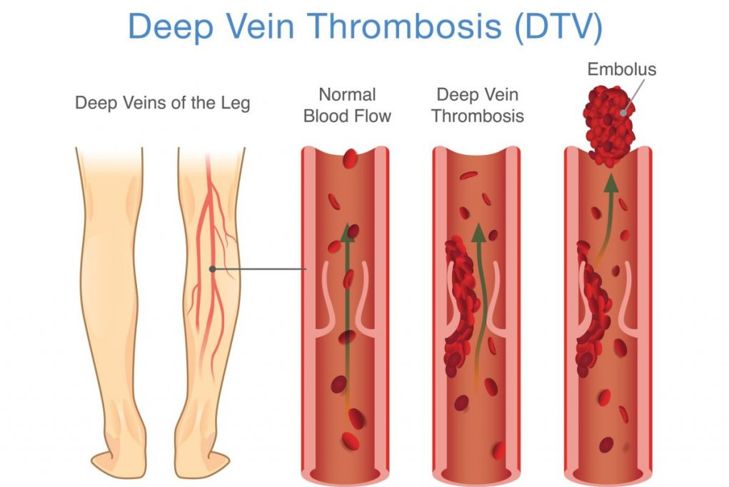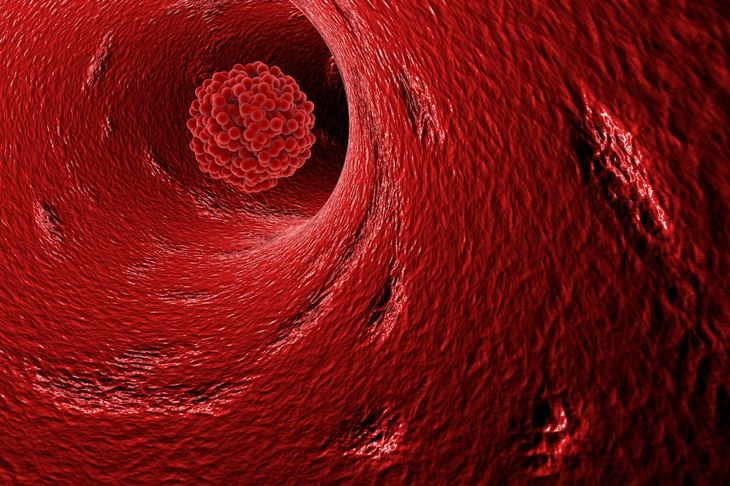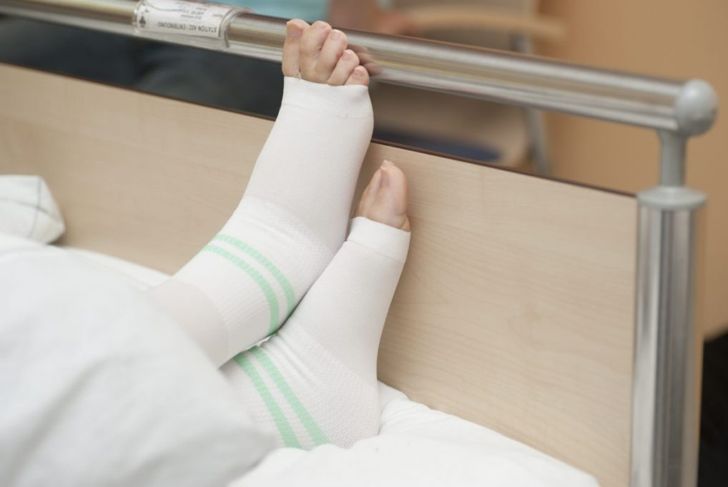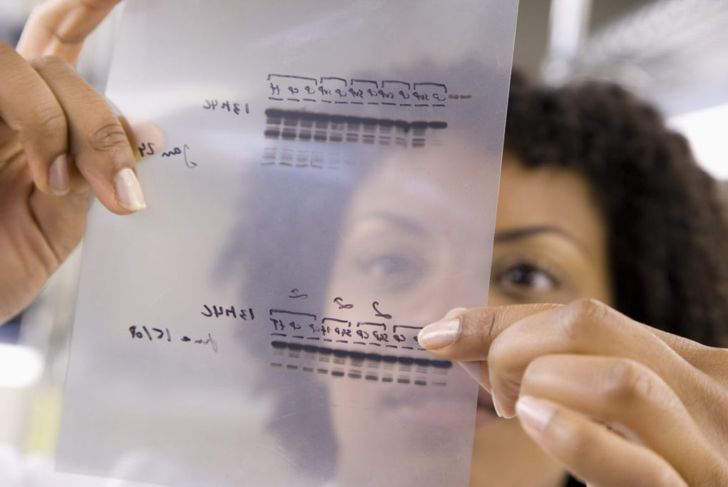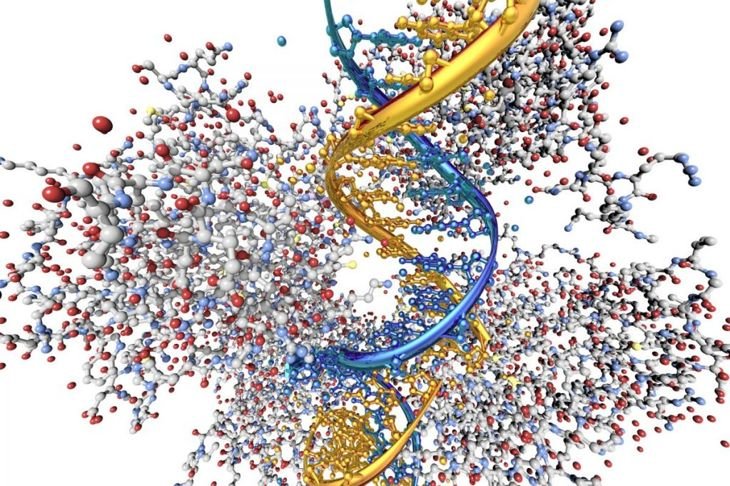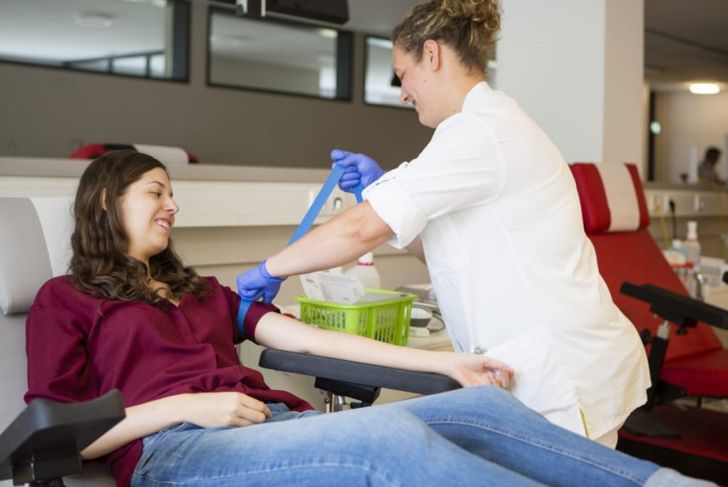Factor V Leiden is caused by a genetic DNA mutation that can occur in both men and women, increasing the chance of blood clots. Deep vein thrombophilia is more likely to develop in people with the gene, and women have a higher risk of blood clots during pregnancy. People with the factor V Leiden gene do not require treatment unless they have a clot. The mutation gets its name from the protein gene F5 and the city where this variation was discovered: Leiden, Holland.
One or Two Genetic Copies
Factor V Leiden is the most common inherited reason that people develop deep vein thrombosis or pulmonary embolisms; individuals with the mutation have a higher risk of developing clots than the average population. The increase ranges from ten-fold for people with one copy of the gene compared to people without the gene, to sixty-fold for people with two copies. Even so, however, the overall risk of anyone developing a blood clot is low, averaging one in one hundred thousand. Factor V Leiden is most common in people with caucasian European ancestry.
Where Do Blood Clots Occur in the Body?
Although blood clots caused by factor V Leiden typically form in the legs and lungs, they can be found throughout the body. Other locations include the eyes, brain, kidneys, and liver. Blood clots can become life-threatening when they break loose and travel to the heart or lungs. Proper diagnosis and treatment can reduce the risk of developing clots and help dissolve them.
The Science Behind Factor V Leiden
Factor V Leiden is caused by coagulation of the blood that continues for longer than it should. Activated protein C (APC) is responsible for stopping the clotting action of F5, but this gene does not respond correctly in people with the genetic mutation associated with factor V Leiden. One or more other genetic mutations combined with F5 can further increase the risk of developing thrombosis.
Identifying the Symptoms
Symptoms of deep vein thrombosis include swelling, enlarged veins, areas that feel hot, and discoloration. Pulmonary embolism symptoms include chest pain, a bloody cough, increased heart rate, and shortness of breath. Factor V Leiden typically goes undiagnosed unless a person develops a blood clot. Certain symptoms can point to an F5 mutation:
Developing a pulmonary embolism (PE) or deep vein thrombosis (DVT) before 50 years old.
Developing PEs or DVTs during or after pregnancy
Deep vein thrombosis in places where it doesn’t typically occur.
Recurrences
Family history
Diagnosis
Certain tests can determine whether blood clots are caused by factor V Leiden. If an APC resistance test is positive, a specific F5 test is often the next step. People with frequent clotting issues can undergo further tests to determine if they have additional mutations that will compound the likelihood of deep vein thrombosis. A simple coagulation screening test may be the initial step or the doctor may order one in conjunction with genetic testing. A person may carry one or two of the mutated F5 genes. While problematic risks are low with a single gene, they significantly increase when a double gene is present.
Treating Factor V Leiden Thrombophilia
Anticoagulants are used to thin the blood and help keep the clot from moving. They don’t necessarily dissolve the clot, but can help the body do so. There is not currently a way to fix the gene mutation, so treatment is directed at dissolving and preventing blood clots. The physician will monitor the condition and typically only prescribe blood thinners as needed, rather than long-term. People who have experienced more than one DVT or PE usually require long-term treatment with anticoagulants. Regular tests determine the blood’s clotting ability. In addition to medication, elevating the legs and compression stockings can treat deep vein thrombosis.
Lower Your Risk
A few lifestyle habits can reduce the risk of developing blood clots.
Long periods of inactivity increases the risk of clots. Walk or move your legs at least every half hour during long drives, plane trips, or sitting at a desk.
Avoid estrogen such as birth control pills and hormone replacement therapy if you are at higher risk of developing clots. Smoking also increases this negative effect.
Wear compression stockings after surgery and start walking as soon as possible.
Exercise the legs as much as reasonably possible throughout the day.
Maintain a healthy weight. Being overweight increases the risk of developing clots.
Who Should Be Tested?
Deciding whether to be tested for factor V Leiden is a personal decision. If several people in a woman’s family have experienced problems with blood clots, then it may help with decisions as to the type of birth control or hormone replacement therapy she chooses. Conversely, if one has no symptoms and leads a relatively healthy lifestyle, a positive test result may create additional anxiety or affect health insurance coverage. For people with a single F5 gene mutation, the chances of developing a blood clot are fairly low.
Alternate Names
Factor V Leiden thrombophilia is the most commonly used name for the F5 genetic mutation. Some experts may also refer to it as hereditary resistance to activated protein C, or APC resistance, Leiden type. These names reference the effect the mutation has on the protein rather than the gene itself.
Interesting F5 Facts
Most people with factor V Leiden can still donate blood unless they are on blood thinners. People with non-O blood types are more likely to have this genetic mutation. For people with a single mutation, the chance of having a clot before turning 65 is only five percent.

 Home
Home Health
Health Diet & Nutrition
Diet & Nutrition Living Well
Living Well More
More